Your nails are often the first thing people notice about your hands, and for good reason. Well-maintained nails can instantly elevate your appearance and boost your confidence. A key tool in achieving this is nail files, a crucial tool for flawless nails. However, with countless options for different types of nail files, choosing the right one can be overwhelming.
Today’s blog on Let’s Panache will explain everything you need to know about nail files, from understanding different types and grits to selecting the perfect file for your nail type. By the end of this article, you’ll be a nail file expert, equipped to make an informed decision and achieve salon-worthy results at home.
Understanding Nail Files
A nail file is like a tiny sculptor for your nails. It’s a tool with a rough surface that helps shape and smooth the edges of fingernails and toenails. With various types, grits, and techniques, nail files play a crucial role in nail care, helping to prevent breakage, splitting, and hangnails. The key to a good nail file is its grit.
Grit is the number you see on your nail files. It tells you how rough the file is. The lower the number, the coarser the file. The higher the number, the finer the file. Remember, choosing the right grit is crucial for healthy and beautiful nails.
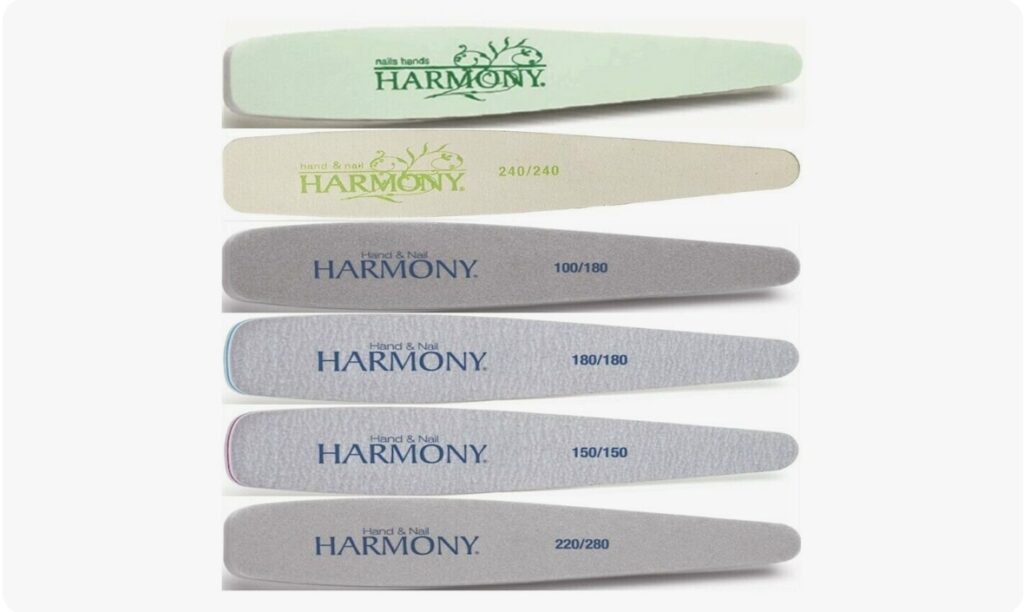
Coarse grit files (80-120): These are like heavy-duty tools. They’re great for shaping artificial nails, but not recommended for natural nails as they can be too rough.
Medium grit files (120-180): These are the most versatile files. They can file length, smooth rough edges, and shape most kinds of artificial nails. Not recommended for natural nails.
Fine grit files (180-240): These gentle files are perfect for natural nails. They can smooth and refine the nail shape without causing damage.
Extra fine grit files (240-400): These are more like buffers and are used to rub off any natural oil from the nail bed before applying nail color, gel, or acrylic for better grip and long lasting manicure.
Buffer files (1000 to 4000): When you rub your finger over them, it feels completely even, with no rough parts. These files are perfect for making natural nails and artificial nails look shiny and polished like they have a top coat on. They help to create a beautiful, glossy finish. Japanese manicure is a perfect example to understand the benefits of buffing.
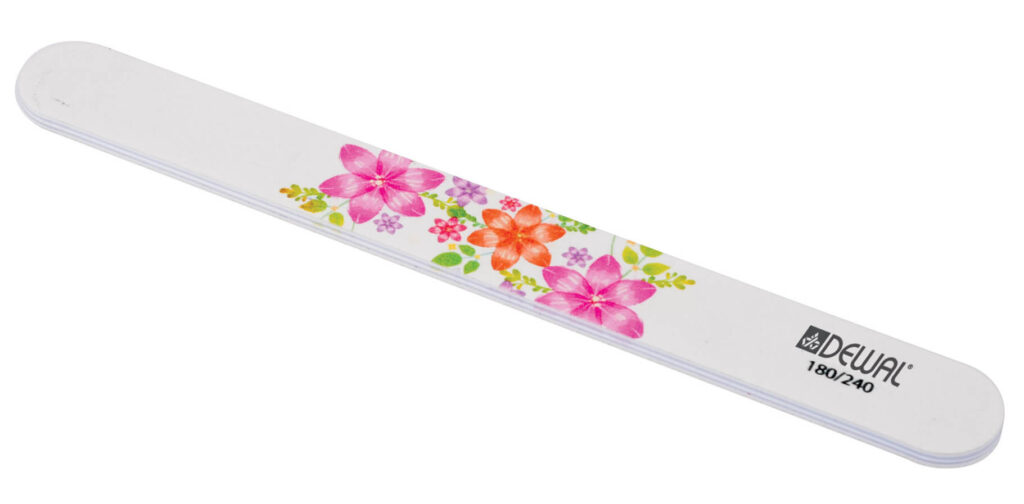
Types of Nail Files
There’s a nail file out there for everyone! Let’s break down the most common types:
Emery board: This is the classic nail file. It’s made of cardboard with a sandpaper-like surface. Emery board is affordable and easy to find, but they can be less durable than other options.
Metal nail files: These are typically used by professionals. They’re strong and durable, but not recommended to use on your natural nails because of their low grit. As long as you don’t have acrylic nails, low grit can cause splinters and weaken your nails.
Sandpaper nail files: Similar to emery boards, but usually with a coarser grit. These are good for shaping thick or artificial nails, but not a good option for natural nails.
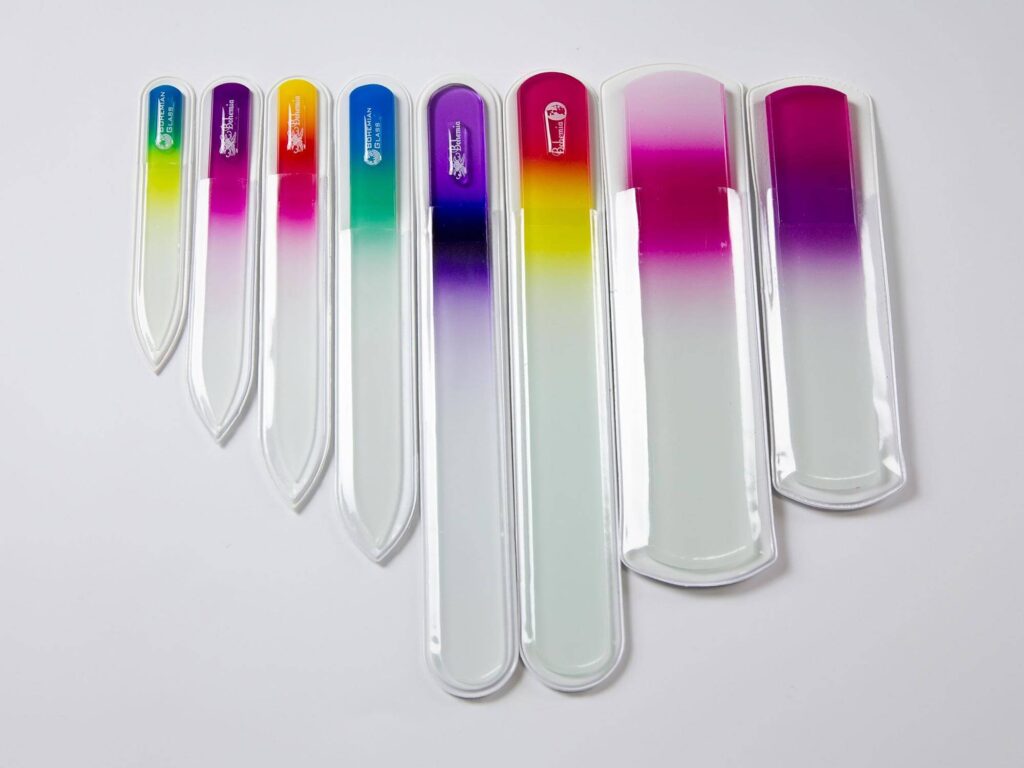
Glass or Crystal nail files: They are renowned for their gentle yet effective approach to nail shaping. The smooth surface of a crystal file prevents the tearing and splitting that can occur with other file types, making it ideal for weak or damaged nails. Unlike traditional emery boards, crystal files are highly durable and retain their effectiveness for an extended period. Because of their non-porous nature, they are resistant to bacteria buildup.
Ceramic nail files: Another durable option that offers a blend of strength and gentleness. The ceramic surface glides effortlessly across the nail, preventing snagging and breakage. This makes them ideal for individuals with sensitive or weak nails.
Remember, the best nail file for you depends on your nail type and your personal preference. We’ll talk more about that in the next section!
Nail Files and Nail Types
Choosing the right nail file with the right grit for your nail type is essential for maintaining healthy and beautiful nails. Remember, these are general guidelines. It’s always best to start with a finer grit and work your way up if needed.
Strong Nails
If you’re blessed with strong nails, you have more flexibility in choosing a nail file. However, it’s still important to treat them with care. Experiment with different grits to find your preference. A medium-grit glass or ceramic file is often a popular choice. But if you want to go with the expert choice then medium grit (120-180) for shaping and fine grit (180-240) for smoothing is recommended.

Weak Nails
Opt for gentle files like glass or crystal. Avoid metal files as they can be too harsh. Focus on fine-grit options to prevent damage. An expert recommendation will be extra fine grit (240-400) for shaping and smoothing. Avoid coarse grits altogether.
Thick Nails
You’ll need a coarser grit to shape your nails. A medium-grit emery board or sandpaper file can work well. But remember, always file gently to avoid weakening the nail. Recommended grit is Medium (120-180) for shaping and fine grit (180-240) for smoothing.
Thin Nails
Thin nails are delicate and prone to breakage. Similar to weak nails, avoid coarse grits. Glass or crystal files with fine grit are ideal for maintaining the shape without causing damage. Extra fine grit (240-400) for shaping and smoothing is recommended.
Split Nails
Be extra gentle! A fine-grit glass or ceramic file can help smooth the split without worsening it. Avoid metal files and excessive filing. Extra fine grit (240-400) is recommended for smoothing the edges. Focus on strengthening your nails with a good nail hardener.
Ridged Nails
A buffer with a high grit can help smooth out ridges. Avoid aggressive filing as it can worsen the problem. If you want to go with the expert choice then fine grit (180-240) is recommended for smoothing ridges.
What’s the Difference Between File and Buffer
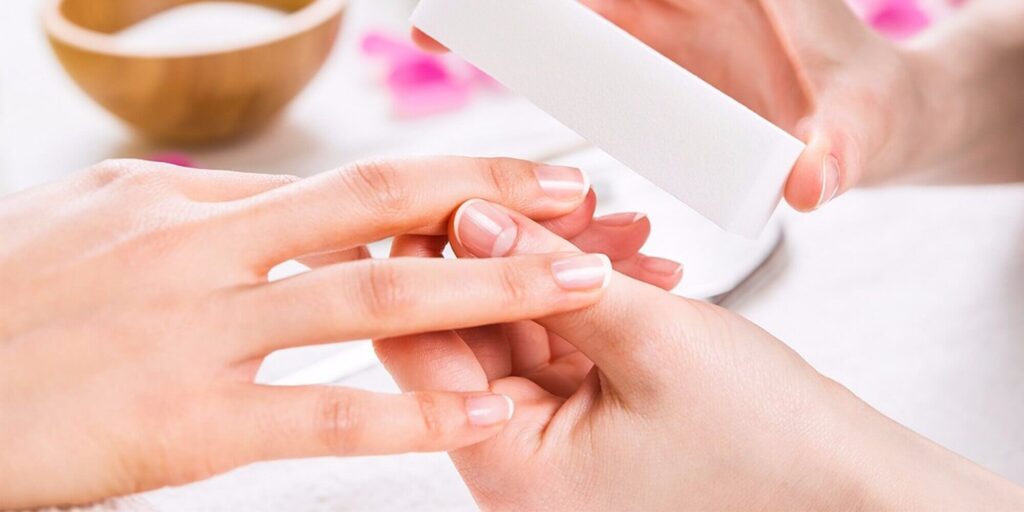
While they might look similar, nail files and buffers have different jobs.
- Nail file: This is for shaping your nails. It helps you shorten them and create your desired shape. Files come in different grits, with coarser grits for shaping and finer grits for smoothing.
- Nail buffer: This is for polishing your nails. It smooths out ridges and gives your nails a shine. Buffers have a finer grit than files and are gentler on your nails.
A file is for sculpting your nails, while a buffer is for adding the finishing touches. It’s important to use both a file and a buffer for the best results. But remember, over-buffing can weaken your nails, so use it sparingly!
How to File Nails Correctly?
Filing your nails might seem simple, but there’s a right way to do it to avoid damage. Here’s how:
- Start with clean, dry nails: Clean nails will prevent bacteria build-up and dry nails will ensure a smooth filing process.
- Choose the right grit: Select a file based on your nail type and desired shape.
- Hold the file correctly: Hold the file flat against your nail, perpendicular to the edge.
- File in one direction: Avoid sawing back and forth, as this can weaken your nails. File from the outer edge towards the center.
- Take your time: Be gentle and patient. Over-filing can cause damage.
- Smooth edges: Once your nails are shaped, use a finer grit file to smooth any rough edges.
Remember, less is often more. A little filing goes a long way.
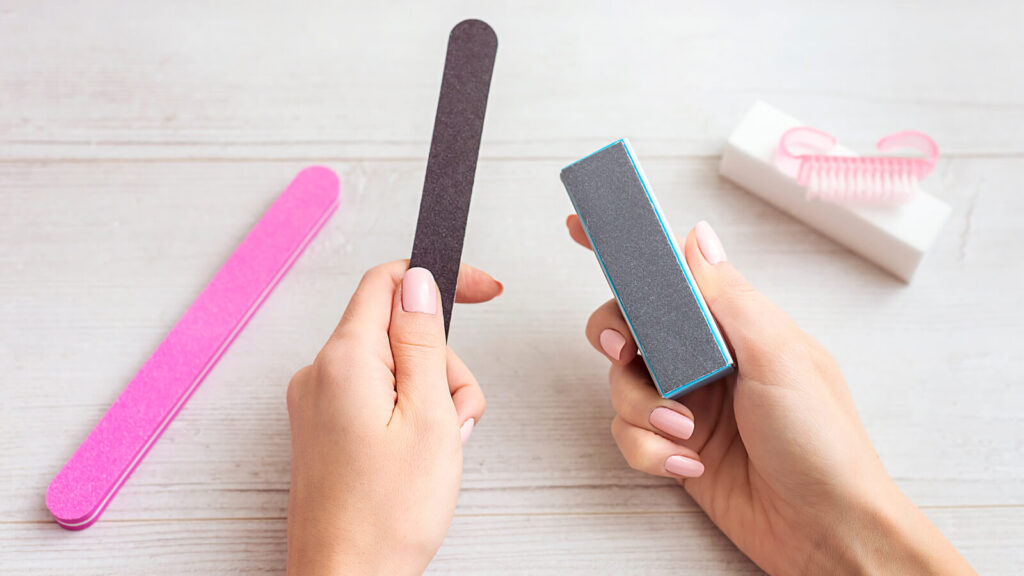
Nail File Care: Keep Your Tool in Top Shape
Just like any tool, your nail file needs some love to keep it working effectively. By following some simple steps, you can extend the life of your nail file and ensure it continues to give you great results.
- Clean regularly: After each use, wipe your nail file with a clean, damp cloth to remove nail dust and debris. For a deeper clean, you can use mild soap and water.
- Disinfect: To kill germs, use rubbing alcohol or a disinfectant wipe on your nail file. This is especially important if you share your tools with others.
- Dry thoroughly: Make sure your nail file is completely dry before storing it to prevent bacteria growth.
- Store properly: Keep your nail file in a safe place to prevent damage. A case or pouch can help protect it.
Nail Files Storage Ideas
- Magnetic strip: Attach a magnetic strip to the inside of a bathroom cabinet door and store metal nail files.
- Makeup brush holder: Use a makeup brush holder to store your nail files upright.
- Travel case: Keep your nail files organized and protected with a small travel case.
Essential Safety Tips for Nail Filing
Proper nail file care is essential for maintaining nail health. Avoid excessive filing as it weakens nails. Never share nail files to prevent bacteria spread. Gentle pressure is key to preventing damage, and using the right grit for your nail type is crucial. Remember to clean your nail file regularly to maintain hygiene.
Electric nail files; Alternative to Traditional files

Electric nail files offer a more efficient and precise approach to nail care compared to traditional manual files.
They feature a rotating head with various attachments to shape, buff, and polish nails. While they can significantly speed up the nail care process, electric files require a higher initial investment and demand more careful handling. Improper use can lead to nail damage, so it’s crucial to invest in a quality device, use appropriate attachments, and maintain a gentle touch to prevent overheating and damage to the nail bed.
The Bottom Line
Choosing the right nail file might seem like a small detail, but it’s actually a crucial step in achieving healthy and beautiful nails. By understanding the different types of nail files, their grits, and how to use them properly, you can elevate your nail care routine. Remember, patience and gentle care are key to preventing nail damage.
So, the next time you’re about to purchase a nail file, armed with this knowledge, you can confidently select the perfect tool for your nails. Happy filing!
FAQs
Can I use a nail file on artificial nails?
Yes, but you will need a coarser grit file to shape acrylic or gel nails. Always be careful not to file too aggressively.
Can I use a nail file on wet nails?
According to experts, It’s best to file dry nails. Wet nails are more prone to breakage.
What is the best way to file my toenails?
Use a larger nail file specifically designed for toenails. File straight across to prevent ingrown toenails.
Is it safe to share nail files?
No, sharing nail files can spread bacteria and infections, It’s best to have your own personal nail fail.
How often should I replace my nail file?
The lifespan of a nail file depends on its quality and usage. Generally, you should replace it when it becomes dull or damaged.

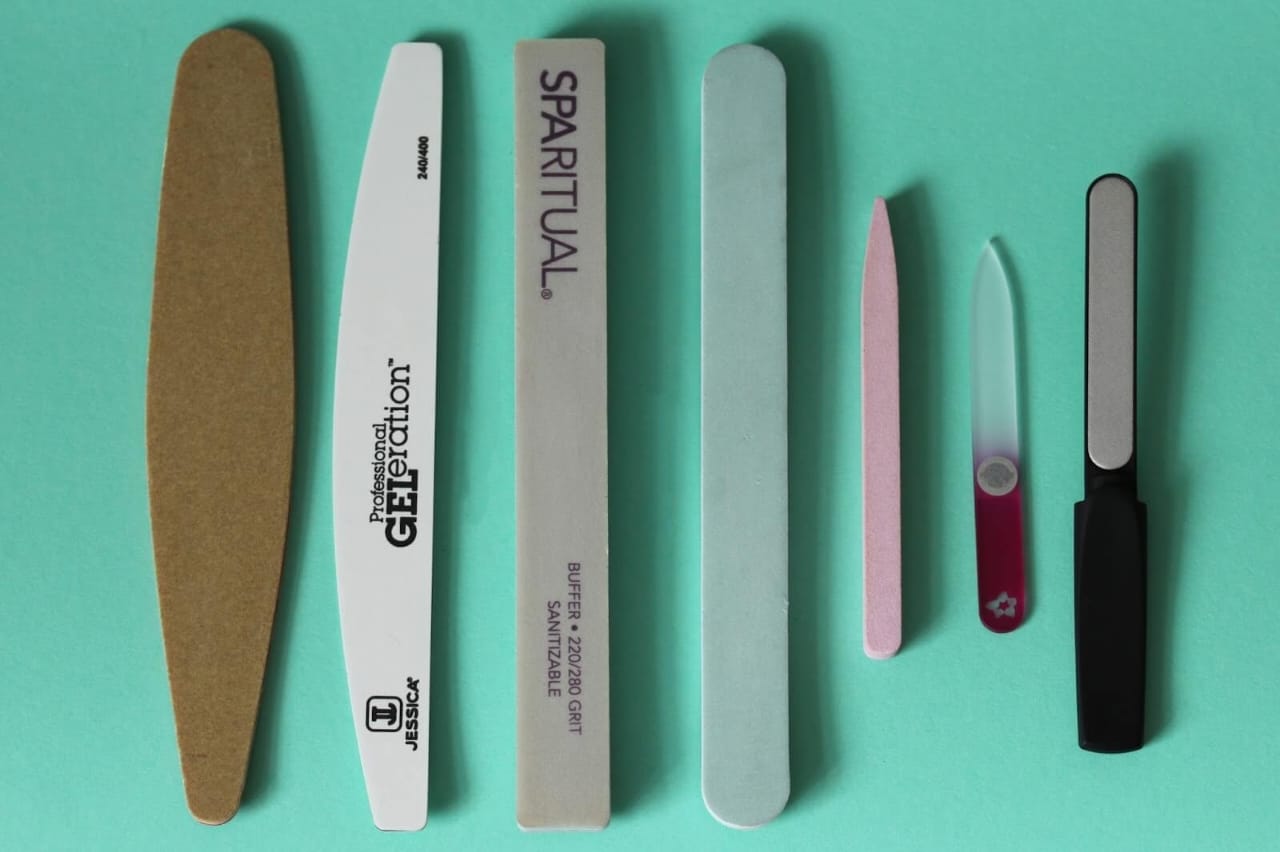
What’s up i am kavin, its my first occasion to commenting anywhere,
when i read this piece of writing i thought i could also create
comment due to this brilliant paragraph.
I’ve been absent for a while, but now I remember why I used to love this web site. Thanks , I¦ll try and check back more frequently. How frequently you update your website?